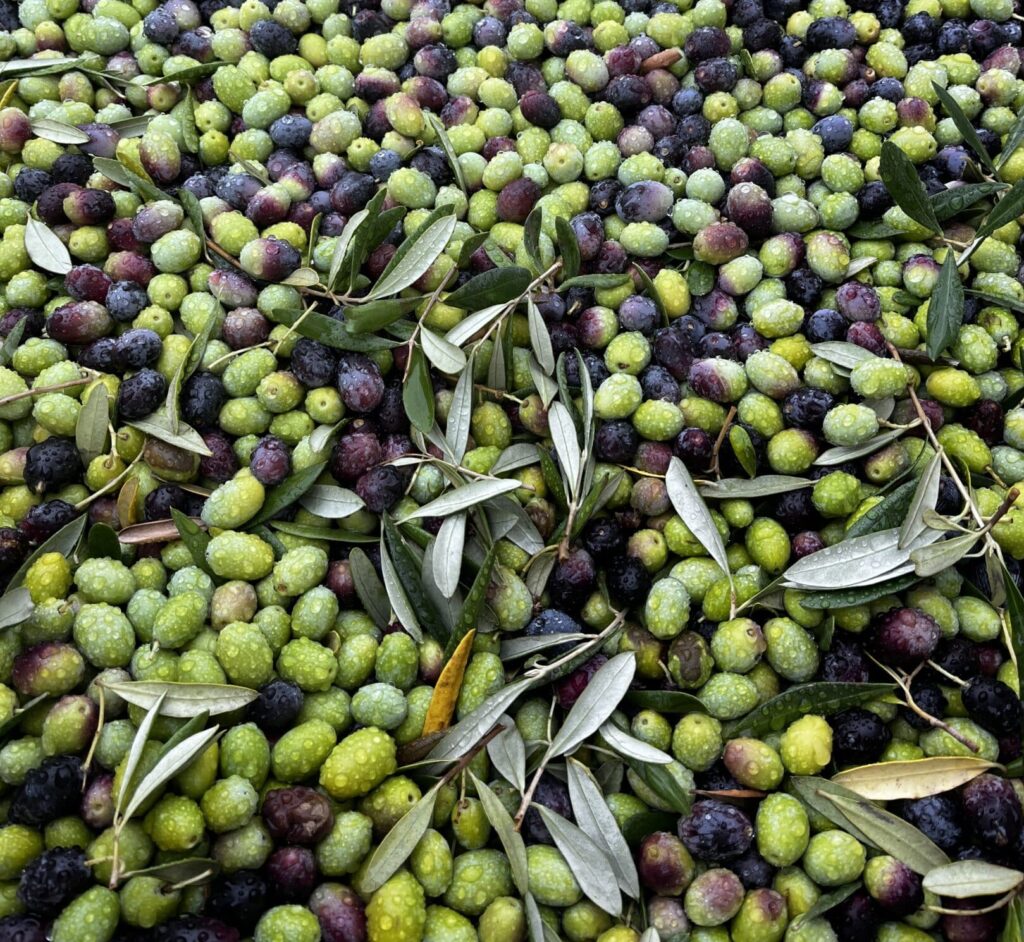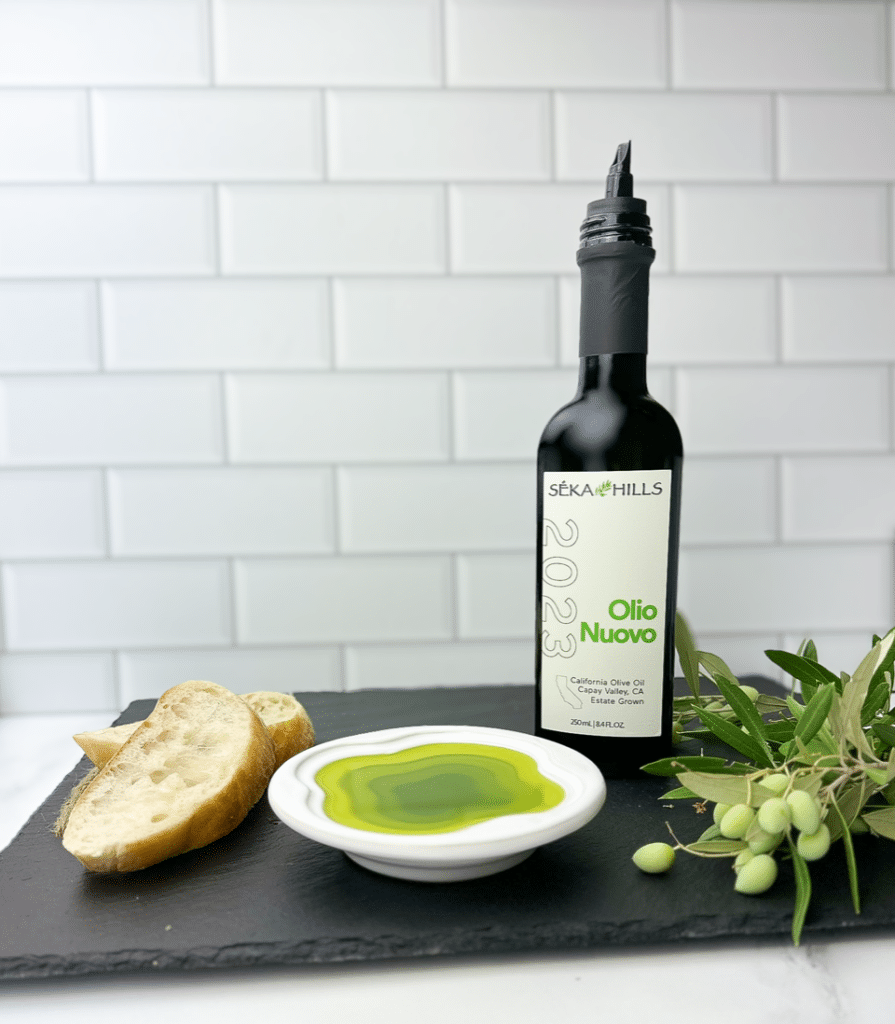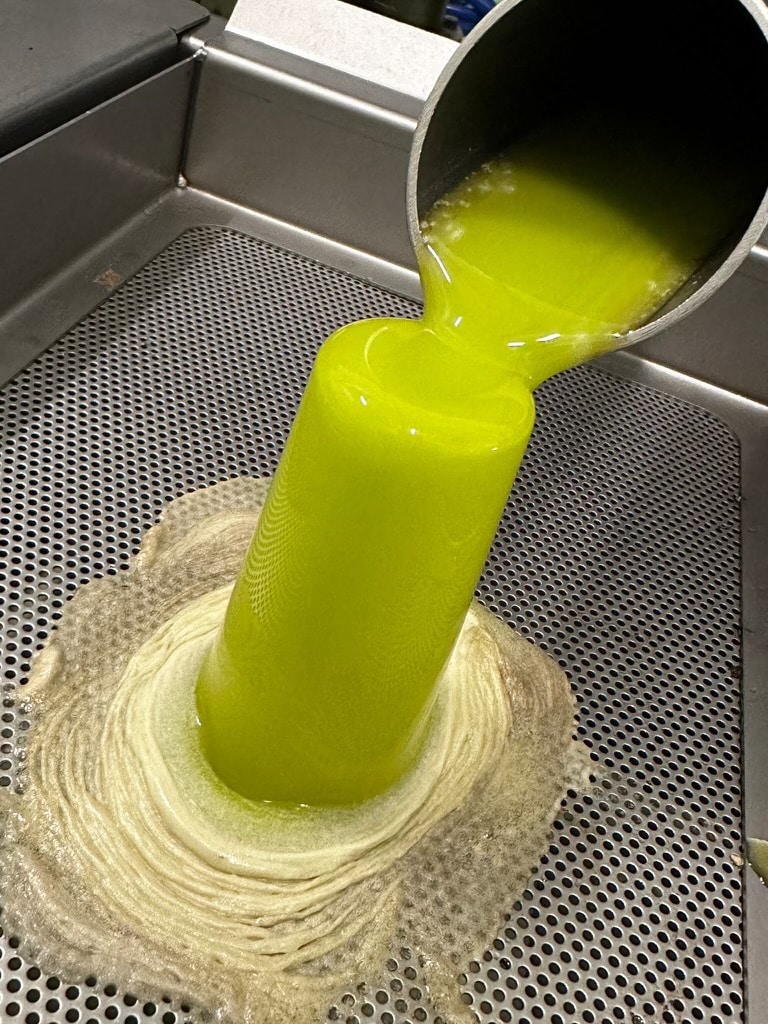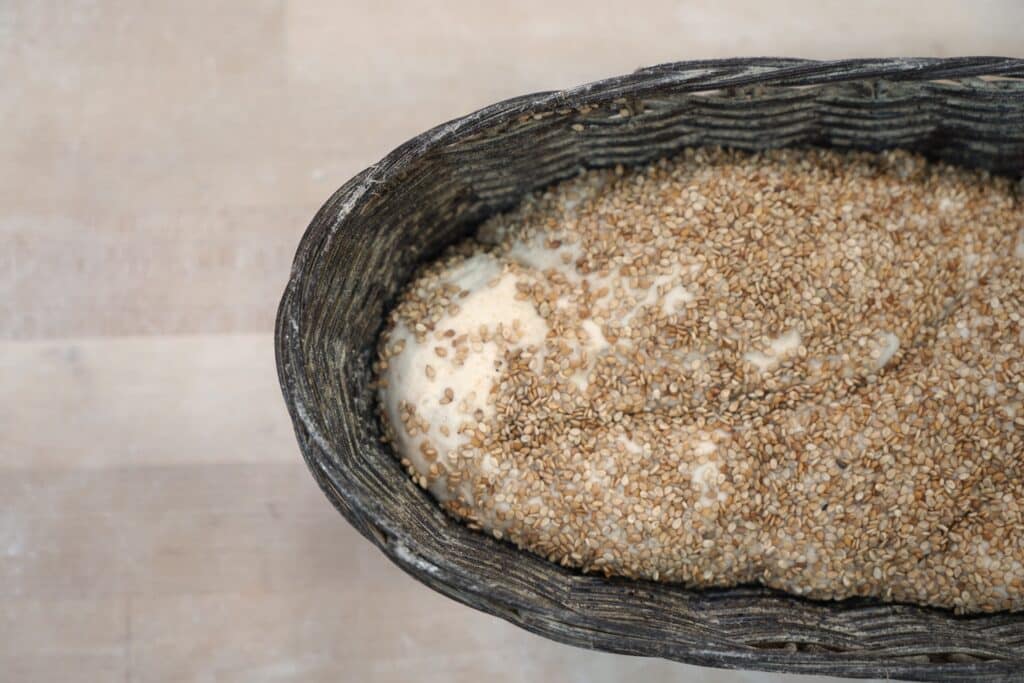As the 2023 olive harvest and milling season has begun in the Northern Hemisphere, we are excited to share how we approach selecting the extra virgin olive oil that proudly display on our shelves. You may already know that we take ingredient integrity seriously, and I have invested time and energy educating myself about extra virgin olive oil, and the characteristics possessed in every bottle on our shelves to assure that it will bring a smile to those who eat it, both inside and out.
“Extra Virgin” is a classification that assures that there is never more than 1% free fatty acid in the olive oil inside the bottle. We ask that our producers provide olive oil that possesses less than 0.5% free fatty acid.
Since the late 1990s, I have attended courses at UC Davis, to identify defects within extra virgin olive oil, using my sense of smell. I have also attended the international Olive Oil Exposition in Madrid, and visited many of our producers at harvest time, in places as far as Türkiye, France, Spain and Chile, and as close as California, witnessing the harvesting and milling process with my own eyes, nose, and taste buds. Through all my lessons, I’ve gained a thorough understanding of what makes one olive oil lower quality – although maybe less expensive – than another.
What I have learned, and continue to develop a deep appreciation for, is that there are many delicate tasks necessary to get the very best extra virgin olive oil in every bottle. Tasks that have additional costs but provide a far superior product than extra virgin olive oil produced with a greater focus on quantity than quality. Our focus in our shop is to bring you only the very best olive oils pressed by growers and millers who never cut corners.

I break extra virgin olive oil into three distinct classifications: Early Harvest, Late Harvest, and Mid-Season Harvest oils.

“Early harvest” olives are smaller fruits and therefore produce the lowest yield (meaning a higher cost), but these olives also contains the highest concentration of polyphenols, which possess the greatest health benefits when eaten raw. These vital polyphenols provide big, bold, flavors of raw artichoke, green vegetables, and a peppery finish on the back of the throat which make for the perfect olive oil to drizzle onto cooked food, atop a salad, or as a healthy and delicious condiment. The high polyphenol content of these early harvest oils provide health benefits that positively impact one’s skin, brain, heart and GI in ways that provide a glow to those who consume it regularly.
We are lucky this year to get in some of the early harvest olive oil from Seka Hills: Olio Nuovo. This oil is milled immediately after harvest, bottled, and shipped to our shelves to provide you with the freshest, healthiest olive oil in the market. Only a limited amount of this prized oil is milled and we are excited to share its bright green color and fresh grassy notes with you.
“Late harvest” extra virgin olive oil is made from olives harvested in December and is often made from olives so ripe that they fall off the trees onto nets, and are then milled into oil that us of a more golden hue. These late harvested olive oils are best described as buttery. Far less pungent, and far less flavorful. These late harvest oils are recommended for cooking as their flavor profiles are much less complex. These olives are larger than the early harvest olives, producing higher yields and allowing for a lower price point, but also possess a far lower level of polyphenols.
My third, and newest classification for extra virgin olive oil is the “Mid-Season harvest”. This is a recent development of the last 20-30 years as more olive groves farm high-density plantings that may be, and are, machine harvested. Most often, these high-density planted olives are harvested mid-season to produce a balance of flavors between early and late harvested extra virgin olive oils. Sadly, there has been recent research demonstrating that the higher density machine harvested extra virgin olive oils possess far lower concentrations of polyphenols, meaninig flavor and health benefits may be diminished.

Many bulk packaged olive oils are blends of multiple different types of olives. Blending olive oils into one bottle makes it easier to mass produce, harder to trace, and often results in a lackluster flavor profile and low polyphenol contents. I find specific mono-cultivars/varieties of olives possess some of the most complex flavors and smells within their respective oils. Almost all of our olive oils are mono-cultivars, and you can read about the olive varietal on the label of the bottle. Arbequina, Koroneiki, Taggiasca, and Memecik are just some of the monovarietals you’ll find in our shop. Each possesses the regional terroir of their place of origin, spanning from as near as California to as distant as Turkey.
Extra virgin olive oil that is certain to please your palate, your body, and the holiday stocking for the good foodie on your shopping list. Next time you visit us, ask a staff member for a tasting of one or any of our oils to decide for yourself which one is your favorite!
Always eat well! Steven
About the Author
Steven Rosenberg
This Week’s SFF Spotlight: Vacherin Fribourgeois
Vacherin Fribourgeois AOC is a Swiss cheese made using raw cow’s milk in the towns of Bulle and Fribourg (Canton Fribourg in west-central Switzerland). This cheese is also made in other parts of Switzerland including the Jura Mountains on the border of France.
The milk for the cheese is sourced from the Fribourgeois breed of cows that graze on the Alpine grass and wildflowers all the way through the late spring and summer. As early fall arrives, the cows are brought down to graze on grass and summer hay. No other fodder is given to the cows except the Alpine meadows. The traditional cheese-making process ensures that Vacherin Fribourgeois has a pleasant nutty flavour underpinned by notes of fresh hay and milk.
What’s a Sustainably Farmed Food (SFF) Share?
Our Sustainably Farmed Food Share (SFF for short) program is a CSA-style food share subscription. Subscribers receive a bag filled with organically grown and ethically raised food items every week. Unlike a traditional CSA, our SFF program is avialable all year long and has options to add items like artisan cheeses, ethically raise meats, farm fresh eggs, fresh-squeezed organic orange juice, and more! We upload recipes and details about the delicious items going into your share each week on our What’s In The Bag.
Learn more about this opportunity to support organic farming and local businesses
